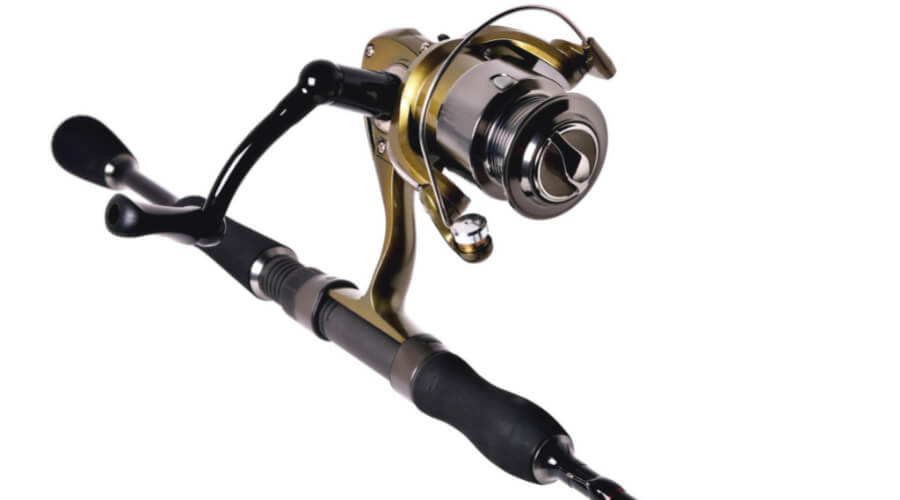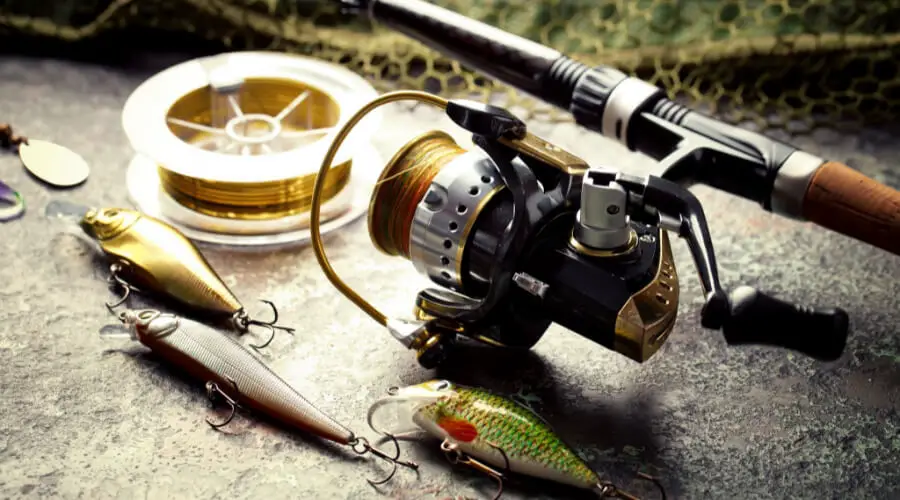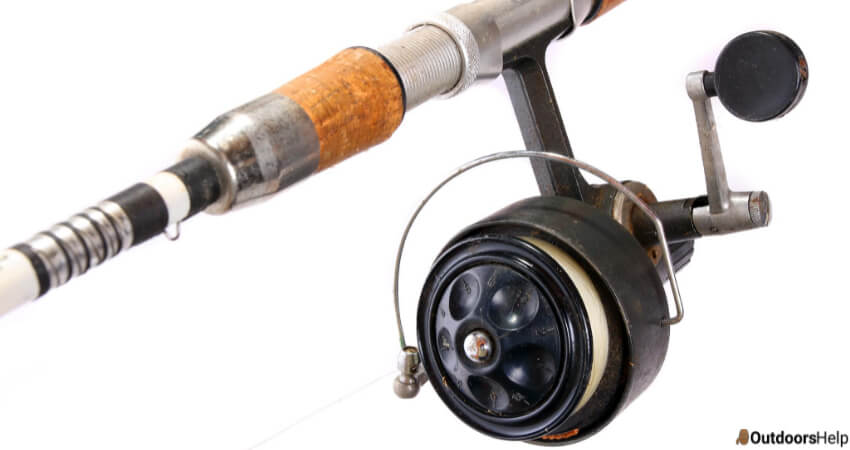When it comes to fishing gear, it can be quite confusing to figure out the best option regardless if you are either a beginner or a pro. Fishing reels are no exception, as anglers have more alternatives than ever for improving their fishing experience. Some of the variety to choose from include trolling, spin-cast, bait cast, and surf reels. For anyone having a hard time choosing from these various types, we will compare them with thorough details to ease your choice and equip you with the knowledge you are looking for. What is the difference between open and closed reels? Which of the two do you find better than the other? Stick around to the end to find out everything you need to know.
An open reel has most of the moving parts and the spool open, while a closed reel has closed face versions with the fishing line enclosed in the reel’s nose cone.
Have you ever heard or come across the term reel in angling? Before we get into the comparison between an open and closed reel, can we first take a second to remind ourselves or familiarize ourselves with the definition of a fishing reel? I’m sure most of us just bumped into it for the first time and didn’t even know what it entails.
A fishing reel is attached to a fishing rod and used in winding and stowing the line. It is usually cylindrical, and as well as retrieving the line, the modern ones usually have fittings that help in accuracy and casting for distance. They can be made from composite materials, rubber, stainless steel, aluminum, brass, and graphite. In angling and competitive casting, they are used traditionally in recreational sport.
What Are The Various Types Of Fishing Reels?

The various types of fishing reels can be confusing if you are new to angling. But don’t worry, this article aims at making that simple for you and takes away the dilemma. They differ in their costs, durability, ease of operation, and the style of fishing they are best suited for. Let us first define them before getting to the pros and cons.
1. Open Reel:
An open reel is one of the most used fishing reels and is also known as Spinning Reel. When you go for this type of reel, you will notice that most of its moving parts and the spool are open instead of being placed behind the spool cover. It stops uncoiling once you cast the line and close the arm of the bail when you store the line on the spool. It’s best suitable for experienced and intermediate anglers because no law prevents beginner anglers from using this type of reel. They generally include a wire bail that comes in handy For distance casting.
2. Closed Reel:
Having closed face versions, you do not see the spool, unlike an open-reel with exposed lines., the fishing line is instead enclosed inside the reel’s nose cone with a hole inside that allows the line to pass from side to side. They are also known as Spin cast Reels. Their reel is mounted above the handle, and casting is simple. Its casting technique is much more straightforward and involves snapping the rod after aligning the timing of releasing the line.
What Are The Advantages And Disadvantages Of Open And Closed Reels?

There are several pros and cons for these two types of reels. Read on to find out.
Advantages Of Open Reels:
1. They are obtainable in a variety of sizes.
2. The line capacity is much more significant.
3. In catching game fish, can also come in handy.
4. It is the kind of reel that is most common.
5. For most types of fishing, it is preferably the best.
Disadvantages Of Open Reels:
1. It is expensive compared to the closed reel.
2. Particularly for beginners and children, it might be more difficult to use.
3. Requires you to use both hands.
Advantages Of Closed Reels:
1. The novices can easily use them.
2. Children can effortlessly use them as well.
3. It is not costly.
4. You can use it with only one hand.
5. They work well.
Disadvantages Of Closed Reels:
1. They can easily break.
2. The line can easily twist or get jammed.
3. They are often manufactured with inferior materials, so they are not meant for heavy usage.
4. They are not recommended for long-distance casting.
The Differences Between Open And Closed Reels:
Of course, there are some characteristic features of open and closed reels which make them differ. Let’s have a look at the following table to figure it out;
| Open Reel: | Closed Reel: |
| Right below the rod is where the reel is mounted. Keeping the line from coming off the spool and spinning backward, the handle locks typically. | For this type of reel, above the handle is where the reel is mounted. |
| Taking some practice to get right, this type of reel requires you to use your fingers to control the line as you cast. | They are simple to cast, and I’m sure you possibly used this type of reel if you ever fished as a kid. Releasing the fishing line, all you have to do is press a button. |
Comparison Between Open Reel And Closed Reel:
After noting down the variances between the two-reel types, let’s get the comparisons to enable you to make a choice that best suits you.
| Feature: | Open Reel: | Closed Reel: | Which is Better Between Open Reel And Closed Reel? |
| Casting | It requires a bit more skill, but they are pretty easy once you get the hang of using them, as most experienced anglers say. | They are much more accessible, and the ease of casting makes this type of reel popular among beginners and children. | Closed Reel |
| The distance of casting | A crucial part of casting over much greater distances is that their open design allows you to store more lines on the spool. | The open reels work best when it comes to the casting distance. | Open Reel |
| Exactitude | Once you know how to use them, spinning reels have a much higher degree of exactitude despite being complicated to use. Intermediate and advanced fishers can attain exceptional accuracy with them. | Simple to use, but the levels of accuracy are very low. | Open Reel |
| Backlash | Easier to occur, but you can prevent them by avoiding putting too much line on the spool, practicing, and refining your technique. | Inside the spool housing, anglers have to deal with knots and tangles frequently. | Since open reels are easier to fix and backlash, closed reels are a nightmare to fix but harder to backlash. |
| Flexibility | Exceptional hauling power is not limited to spinning reels. You’ll still be able to catch small to medium-sized fish even though they are not recommended for saltwater use. | Suffer from a decided lack of flexibility because you have to use small spools with a low line capacity. For catching small fish in one area, it is, however, recommended. Especially if there’s any cover like vegetation, you’ll be unable to pull a big fish out of the water. | Open Reel |
| Quality | Has a much more strong quality, without a doubt. Reflecting on the price, inferior quality is perhaps the major downfall of this kind of reel. | Especially plastic ones, there are numerous cheap models obtainable. But they won’t last you very long if you wish to fish regularly. To the demands of long-term use, they are unfortunately not designed to stand up to them. | Open Reel |
| Cost | Cost more than the closed reels. If you want something you can grow into, spending a bit more on this reel may benefit you if you have a genuine passion for exploring fishing. | Cheaper than open reels due to their small sizes, fewer components, and less expensive materials are typically used to produce them. They are also a popular option for children due to their low price tag. | Closed Reel |
Conclusion:
Both reels serve different purposes as some anglers might debate and disagree on one being better than the other. But depending on the type of fish or the number of fish you are going for, or generally the intended use, you can tell that each type of reel is better, and there is no clear winner against the other. You’ll easily make the right choice as long as you have a clear idea of your intention on using your reel.
After reading through all the facts and information provided in this article, I’m sure you now have all the answers to the numerous questions you had about open and closed types of reels. You can now define the two and what each of them entails with their differences, advantages, and disadvantages. Go ahead and make your final verdict based on all the findings, then make the best out of your passion for fishing. Happy fishing!

